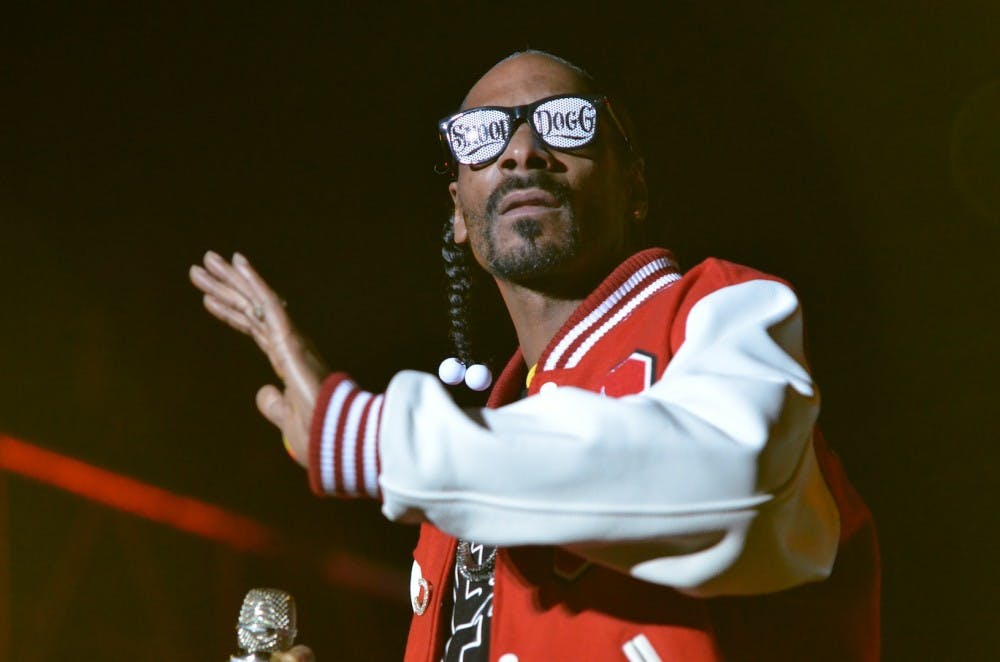After a nearly silent eleven years, broken only by several strong feature appearances and a couple of recent mixtapes, the legendary hip-hop group De La Soul released their Kickstarter-funded album and the Anonymous Nobody on Aug. 26. Liberated from the oppressive forces of a record label, the quirky, creative collective planned to create an experimental comeback album.
Almost 30 years ago, De La Soul put out their first studio album, 3 Feet High and Rising, which climbed to the number one spot on the American R&B charts. From that point on, they continued to churn out dozens of singles, many of them rising up through the charts of several genres and several countries.
Prior to their most recent album, De La Soul amassed an impressive discography, including seven studio albums, a live album and a handful of compilations, mixtapes and EPs. Their work has consistently received praise from music critics, though the popularity of their older music nearly eclipses that of more recent projects.
In the Kickstarter description for their latest release, De La Soul wrote, “True to our Hip-Hop roots, we make music without limits.” Unfortunately, this boundless freedom didn’t lead De La to any great creative heights. They instead ended up with a mixed bag, crafting several beautiful songs with fun lyricism; some boring, one-note tracks; and a few left-field ventures that ultimately fail to impress.
The LP starts powerfully with “Genesis,” a spoken word piece performed by Jill Scott across a smooth string backing. This introduces “Royalty Capes,” a hard-hitting track driven by a low, bounding bass and flittering saxophone trills. Dave and Posdnuos roll onto the beat like kings, with their booming flow emphasizing the smack of the kick drum. The soundscape is pierced by a distinctive horn riff — a clean, regal phrase evoking long red capes, white frills and crowns. This is the best track on the album.
The rapping continues to impress throughout the LP. Dave, Maseo and Posdnuous play off of each other’s energy, turning each song into a cypher. Out of thin air, they drop gems that are at once unique, funny and layered. Dave’s line on “Royalty Capes,” “Androids read raps off iPhones / I choke the blood out of felt tips,” serves as a perfect example.
The featured rappers shine as well. The always-consistent Roc Marciano weaves some phenomenal bars, spitting “Rappers aren’t trying to see me like a diamond tester,” with his distinctive snarl on “Property of a Spitkicker.com.” Snoop does what Snoop does best, bouncing over the “Pain” beat as if he were born to rhyme over that track. Next up, 2 Chainz has yet another strong feature, layering the tinkling “Whoodeeni” beat with a surprisingly dark verse which becomes lighthearted: “When I’m in the booth, I’m MJ with his tongue out; / When I’m in the booth, I’m Kanye with a gun out.”
Unfortunately, the quality of the beats takes a serious dive after the first few songs. Tired of dealing with the exhausting campaign of clearing samples with labels, De La Soul hired studio musicians across LA to jam for over two hundred hours and used the resulting records as their sample library. While the venture into live instrumentation is an interesting step, it ultimately hinders the album.
The beauty of the sound of samples in hip hop comes from more than just the chords or the rhythm. There is a distinctive character to each soundbite. One can listen to any earlier De La Soul song, such as “Rock Co Kane Flow” from their previous album, Grind Date, and see how much more engaging, gritty and soulful Jake One’s choral masterpiece is when compared to the clean, flat beats on and Anonymous Nobody. With this studio driven production, there is a manufactured atmosphere to the music. It truly sounds like a meandering jam session — no real energy or drive.
This album’s greatest flaw may be what many thought would be its greatest strength: its impressive feature list. De La Soul suffer a fate that Chance the Rapper ran into with Coloring Book. Both give up their personal style to fit the artists they work with. On songs like “Drawn” with Little Dragon, “Here in After” with Damon Albarn and even “Property of Spitkicker.com” with Roc Marciano, De La Soul tailor everything from their delivery to the beat to match the artist they’re featuring.
Emblematic of this is the worst song on the album, “Lord Intended” featuring Justin Hawkins. This is yet another failed experiment in a long tradition of hip-hop artists trying to fuse their work with rock, placing it on a list which already includes Jay Z’s infamous 2004 Linkin Park collaboration; Action Bronson’s newest album, Mr. Wonderful; and a whole bunch of Lil Wayne songs.
“Lord Intended” plays out like a poor parody of both genres, the wailing electric guitars and the kicking 808 clashing under a weak, generic chorus.
While this review could be perceived as highly critical, it is important to note that this isn’t a bad album. De La Soul shine on many points throughout the project, and while the missteps are disappointing, they make up a minority of the project. When De La Soul gather the proper energy and ride a beautiful, knocking beat, they continue to make great music.
The shining moments on this LP only spur excitement for what De La Soul is going to do next. “We embrace you like brothers, bestow you / with an outro that’s also an intro.” This refrain on “Exodus,” the last song, hints to more upcoming De La Soul work — a welcome prospect.





